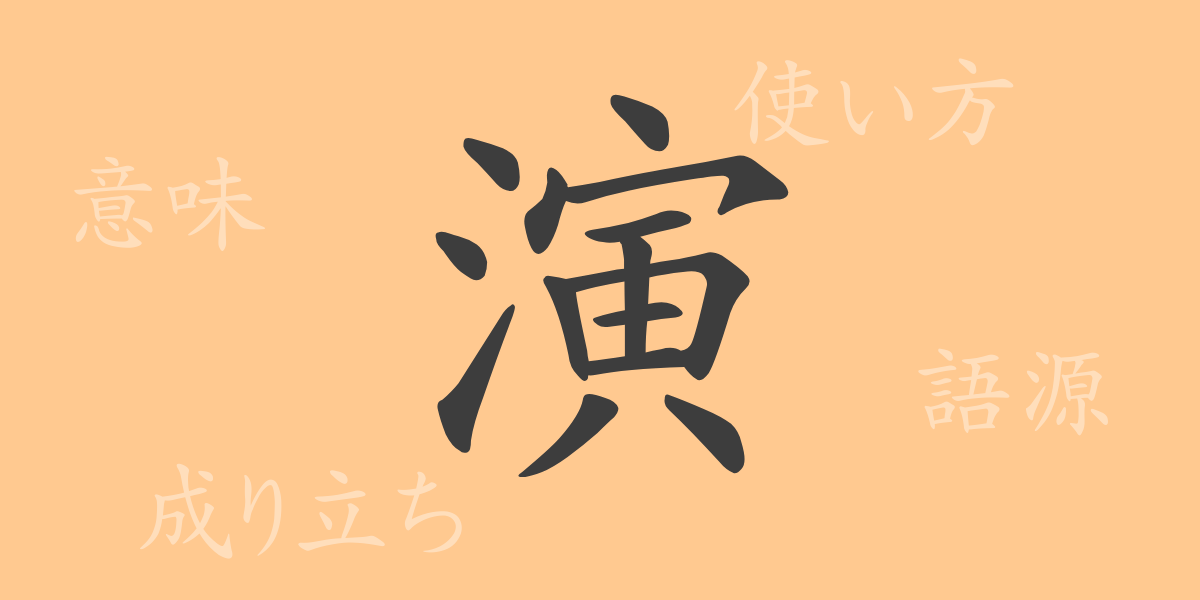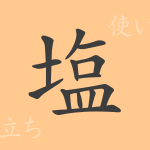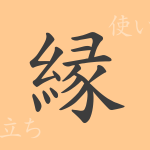“
The Japanese language contains numerous kanji characters that richly express emotions and concepts. “”演”” (En) is one of the most commonly used kanji characters in various situations. From performing on stage to deductive reasoning, the depth and breadth of meaning that “”演”” (En) possesses reflect the subtlety of Japanese culture. In this article, we will delve into the full picture of this kanji, from the origin of “”演”” (En) to its meaning, usage, and the frequently used idioms and phrases in daily life.
The Origin (Etymology) of 演 (En)
The kanji “”演”” (En) is an ideogrammic compound character that evolved from a pictograph. “”氵”” represents water, known as the three-dot water, while “”寅”” serves as a phonetic component. Originally, it depicted the appearance of water spreading, from which the meaning of “”to expand”” or “”to develop”” was derived. Later, meanings related to oratory skills were added, stemming from the idea of expanding a story and performing on stage, and its meaning has continued to expand to the present day.
The Meaning and Usage of 演 (En)
The basic meaning of “”演”” (En) is “”to expand”” or “”to develop,”” from which derived meanings such as “”to express”” and “”to perform”” have emerged. Depending on the context, it is used in forms such as “”演じる”” (En-jiru, to perform), “”演説”” (Enzetsu, speech), and “”演習”” (Enshū, exercise) to describe the act of actually doing something or to explain a matter in detail. It can also be used in the form of “”演出”” (Enshutsu, production) to represent an abstract concept concretely.
Reading, Stroke Count, and Radical of 演 (En)
“”演”” (En) is one of the fundamental kanji characters in Japanese, and understanding its reading and components is essential in kanji learning.
- Reading: The on’yomi is “”en,”” and there is no specific kun’yomi.
- Stroke Count: A total of 14 strokes
- Radical: Three-dot water (Sanzui, mizu)
Idioms, Phrases, and Proverbs Using 演 (En) and Their Meanings
Idioms and phrases containing “”演”” (En) are widely used in Japanese. Here are some examples:
- 演劇 (Engeki): A play performed on stage. An art form in which actors perform based on a script.
- 演習 (Enshū): Training or practice conducted in anticipation of actual combat or other situations.
- 演説 (Enzetsu): A speech given to many people. Used when politicians express their opinions or policies.
- 演出 (Enshutsu): Devising the presentation of a stage or film work. Or, expressing a phenomenon in a specific way.
- 演技 (Engi): The actions or expressions shown by actors on stage, in movies, or on television.
Summary of 演 (En)
The kanji “”演”” (En) is a character with various meanings and usages stemming from its origin. It is widely used in our lives, from performing arts to daily conversations and academic discussions. The rich expressive power of this single character symbolizes the depth of the Japanese language, and by understanding it, we can feel the power of words more deeply. Through “”演”” (En), why not take an interest in more kanji characters and explore the beauty of the Japanese language?
“

























